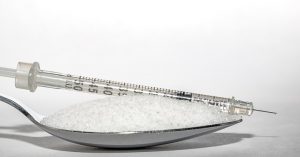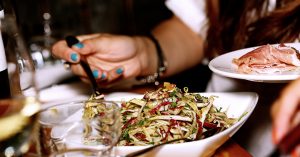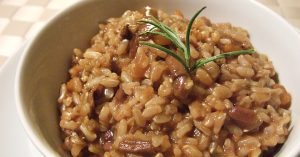
Weight loss for women above 40 is not so simple to understand because our bodies’ internal functions are influenced by each other. When one set of controls changes — like hormone status — it alters other functions connected to that system.
Specific changes to your body — and lifestyle patterns — after 40 will act as a double whammy when it comes to weight. However, weight issues aren’t just about overeating or not exercising. They are about metabolic changes that are collectively known as insulin resistance.
Hence, it is vital to maintaining a healthy weight, as obesity is a risk factor for type 2 diabetes, heart diseases, high blood pressure, and even cancer. This article focuses on the connection between insulin resistance and weight loss after 40.
Learn More: Relation Between Obesity And Type 2 Diabetes

What is Insulin Resistance?
Insulin resistance is the inability of your body to convert the food into energy to fuel your cells. People with the metabolism dysfunction have difficulty regulating their blood sugar, which is mostly due to insulin resistance or diabetes. In both the instances, the bodies are unable to pull glucose into the cells. This means that excess levels of glucose build up in the blood. With nowhere to go, the body turns this extra energy into fat and stores it for later.
Insulin Resistance and Weight
Insulin resistance and weight have a complicated relationship. Some health experts are of the opinion that obesity can cause insulin resistance. And extra weight around the waistline is especially dangerous. Reason: belly fat produces hormones and other chemicals that can cause health diseases. Belly fat also causes inflammation in the body. Over a period of time, this can lead to chronic inflammation.
How to Lose Weight with Insulin Resistance
It is important to lose weight if you are suffering from this condition to avoid diabetes or control it. These steps will help you lose some fat.

Portion control
By eating small meals every 3-5 hours, you can keep your blood sugar levels more constant. Going without food for long hours will result in your body storing fat because your metabolism slows down.
Eat more of carbs
Your ideal carbohydrate to protein ratio should be 2:1, which means for every 1 gram of protein, eat 2 grams of carbohydrates. This keeps the body from storing excess carbohydrates in the form of fat.
Eat lean sources of protein
These can be lean meat, fish or poultry, legumes, dairy foods (low-fat or fat-free), or nuts and seeds. With the exception of nuts and seeds, eat as much of the other sources to satisfy your hunger.
Eat more of vegetables
Try and include at least three servings of vegetables daily, except corn and potato, because they are high-carbohydrate foods.
Exercise everyday
Do at least 30 minutes of aerobic activity and 20 minutes of weights three days every week. Aerobic activity includes walking, jogging and running. Weights involve pulling, push ups, pull downs or lifting the muscles to create resistance.
Note: A weight loss of 5-7% of your body weight can lower risk of type 2 diabetes.
Diet Tips
Generally, it’s advisable to choose whole, unprocessed and avoid highly processed foods. Foods that are highly processed, include white bread, pasta, rice, and soda. They spike blood sugar levels and this puts extra stress on the pancreas, which makes the hormone insulin. Here are some foods that you can eat.

- Vegetables: Tomatoes, spinach, colorful peppers, spinach, broccoli, cauliflower.
- Fruits: Opt for fruits high in fiber like apples, berries, bananas, grapes, plums, and peaches. Avoid fruit juices since they can raise blood sugar as quickly as regular soda.
- Dairy: Opt for fat-free, low-fat, or nonfat unsweetened milk and yogurt. Skip whole milk and full-fat yogurts because a high intake of saturated fat has been linked to insulin resistance.
- Whole grains: Whole oats, oatmeal, corn meal, brown rice, millet, and quinoa are rich in vitamins, fiber, and minerals.
- Beans and legumes: Just make sure to drain and rinse canned beans since they can be high in sodium.
- Fish: Fish that is loaded with omega-3 fatty acids can reduce your risk of heart disease, a common condition for people with diabetes. For example, salmon and mackerel.
Conclusion
The best way to lose weight is to eat fewer calories than you burn and to exercise every day. Also, set goals that are achievable. For example, start with one healthy change to your diet, and one addition to your activity level. And remember, losing weight won’t happen overnight. Plus, consult your doctor before changing your diet and exercise routine.
